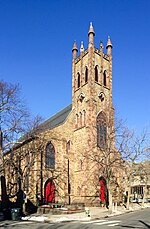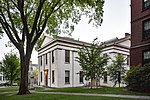Rhode Island Historical Society
1822 establishments in Rhode IslandBuildings and structures in Providence, Rhode IslandEducation in Providence County, Rhode IslandHistoric preservation organizations in the United StatesHistorical societies in Rhode Island ... and 6 more
Historical society museums in Rhode IslandHistory of Rhode IslandLibraries in Rhode IslandOrganizations based in Providence, Rhode IslandRhode Island cultureState historical societies of the United States

The Rhode Island Historical Society is a privately endowed membership organization, founded in 1822, dedicated to collecting, preserving, and sharing the history of Rhode Island. Its offices are located in Providence, Rhode Island.
Excerpt from the Wikipedia article Rhode Island Historical Society (License: CC BY-SA 3.0, Authors, Images).Rhode Island Historical Society
Benevolent Street, Providence
Geographical coordinates (GPS) Address Nearby Places Show on map
Geographical coordinates (GPS)
| Latitude | Longitude |
|---|---|
| N 41.8253 ° | E -71.3957 ° |
Address
Grant-Fulton
Benevolent Street 105
02912 Providence
Rhode Island, United States
Open on Google Maps









